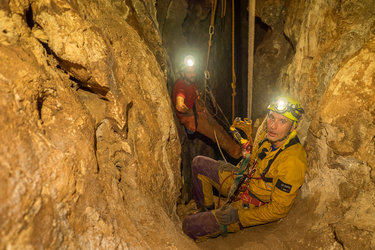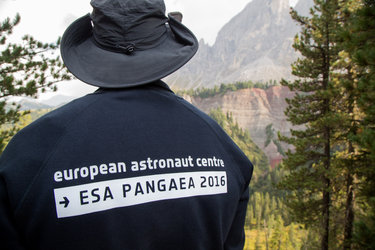Sampling the future: Pangaea geology course goes operational
This week will see the second edition of ESA’s Pangaea geology field training course start at the European Astronaut Centre in Cologne, Germany. The course includes operational concepts and field trips, and prepares the way for future ESA missions to other planets.
This year’s edition will concentrate on Earth and planetary geology, interpreting orbital images, planetary protection, lunar geology and impact cratering. ESA personnel involved in developing missions to the Moon will participate. The course is primarily designed for astronauts and will feature ESA astronaut Samantha Cristoforetti taking part with Eurocom and ESA spacewalk instructor Hervé Stevenin, as well as members of ESA’s exploration strategy and future missions team.
Pangaea will prepare not only astronauts, but also mission developers to work with European planetary geology field scientists on operational concepts for exploration, operating rovers and the design of sample-return missions.
The team of astronauts, spacewalk experts, engineers and scientists will use the course to tackle aspects of taking geological samples, discussing issues from operational field tools to mobility constraints, location, avoiding contamination of samples, support tools and documenting their work.

Three field trips are planned for this year. Course director Francesco Sauro says: “The novelty for this edition is in the new field trip to the Ries impact crater, in western Bavaria, Germany, that was also visited by Apollo 14 astronauts in 1970.”
After the last session of the course in Lanzarote, Spain, an extension campaign will test a series of technologies and protocols to increase awareness and prepare astronauts and operation engineers working in environments that resemble other planets.

During the course, ESA astronauts Matthias Maurer and Pedro Duque will use their experience from previous Pangaea courses as well as ESA’s CAVES underground training course and NASA’s NEEMO underwater simulation missions.
“The first edition of Pangaea was seen by some as being too early to prepare astronauts for planetary missions. But we learned a lot about the needs of engineers, scientists, astronauts and trainers, and the necessity to start thinking about space exploration from a different perspective,” said Loredana Bessone, responsible for Pangaea.
“The Pangaea course attracted the attention of ESA’s exploration team, and for this edition we decided to make of the course a platform and a forum to allow teams to grow together towards a joint human and robotic planetary geological exploration,” concluded Loredana.
















